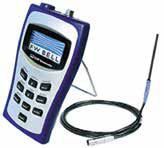The need to work in a safe environment is the main prerogative of new legislative systems established by EU Directives and endorsed in Italy.
In this context, Legislative Decrees 81/08 (for the safety of workers in the workplace), 494/96 (on temporary and mobile construction sites), 493/96 (public notices at the worksite) and Legislative Decrees 17/2010 (implementation of Machinery Directive 2006/42/EC) play the role of updating the existing rules in Italy (UNI), Europe (EN) and International (ISO).
The contents of the new legislation have some common elements:
This safety legislation exceeds mere regulatory compliance and outlines the basics of management, planning and daily review of safety issues in work activities.
Law 81/08 on the safety of workers states that work equipment must be subject to periodic inspection.
Lifting equipment that fall within the scope of the inspection service in accordance with Legislative Decree 81/08 are:
FAS Servizio Sicurezza objectives are aimed at safety and consulting:
The technical staff is organized as follows:
The vehicle equipped with measuring and testing instruments has also available:
Qualified personnel, with significant experience on the field and qualifications obtained as a result of specific training courses.
The qualifications are subdivided as follows:
The Inspection is carried out according to the following procedures.
The first visit occurs on-site to assess the quantity and quality of the products to be inspected and the work environment in which they operate. Date and operating procedures for the inspections are defined with the logistical support of FAS according to the availability of the customer. The team visit takes place at the facility and the identification of the equipment and related EC certifications are carried out. The inspections are carried out in accordance with the technical regulations of reference, and any repairs required are identified at time of issuing of the inspection reports, which are issued both in paper and digital format.
After each inspection, all equipment is provided with a serial number, identification of equipment capacity and visible proof that the inspection occurred. If the result is one of noncompliance, the equipment will be placed in a special area not available to operators.
A Method to detect defects on lifting equipment.
The ultrasonic equipment allows detecting the presence of defects on both ferrous and non-magnetic metal elements.
Thanks to this method, it is also possible to detect defects in depth; such method is improved compared to traditional methods such as magnetic particle (MT) testing or penetrant liquids (LP) testing, which allow just to detect surface or subsurface defects.
This is a method used to measure the residual magnetic field on permanent magnets.

The Gaussmeter (see figure) is an instrument with which it is possible to detect the residual magnetic field on permanent magnets. This way it is possible to verify on site, through the use of a probe, if the magnet in use still has the necessary strength to ensure the lifting capacity.
Each FAS team has an instrument of this type available and the adequate expertise to use it.